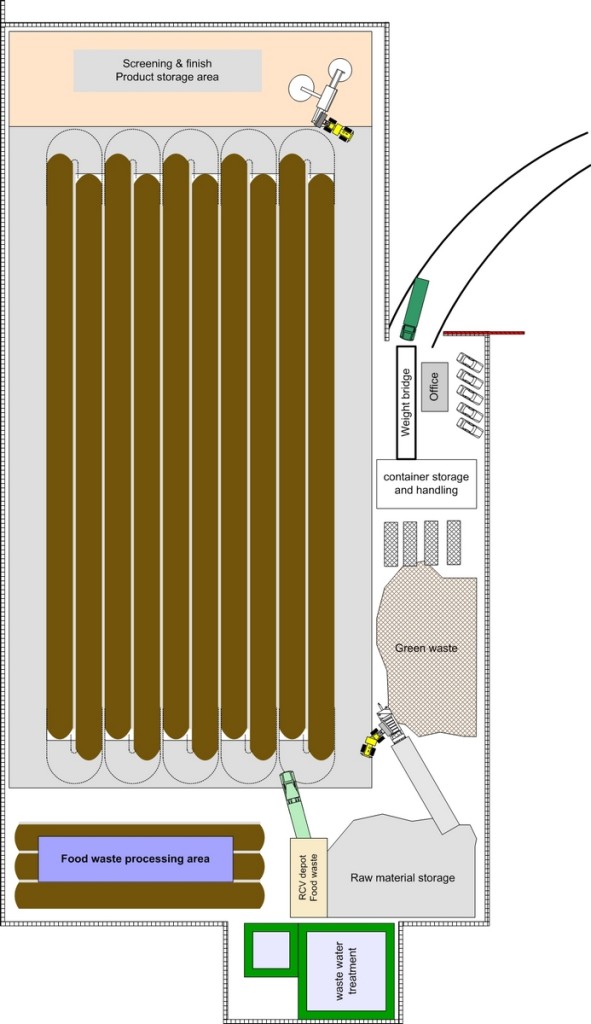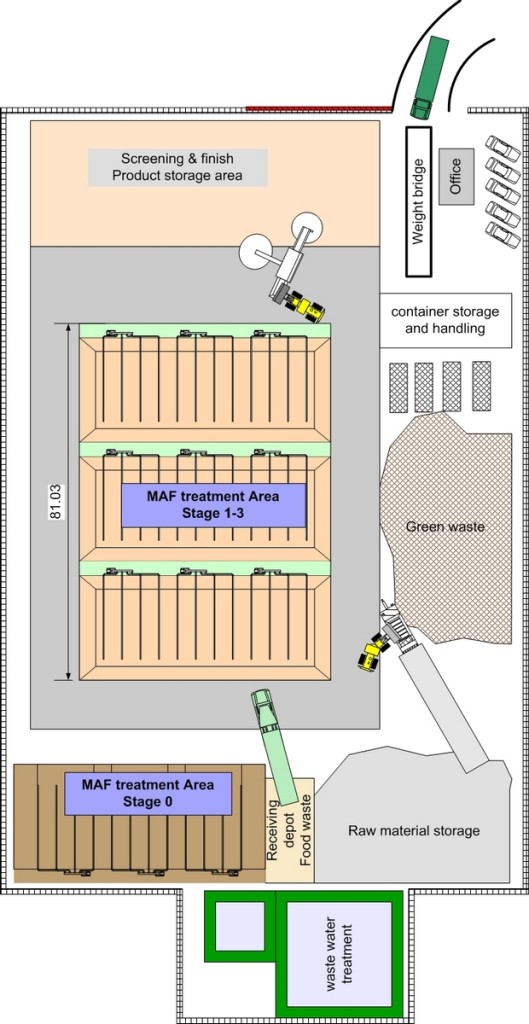Comparison Study:
The following images represent a simplified graphic example of the reduction of surface area required by a composting facility after converting from a traditional windrow turning operation to the MAF composting system.
In this example we look at the footprint of a windrow turning operation with an input capacity of 8000 tons per annum of green waste on a 14600 sqm. site. A typical 5m wide by 2m high windrow would require 10 rows at 111m each to accommodate 6000 cubic meters of material. In the example we allow only .5 meters between each windrow (in reality it would likely be much greater). Thus, the windrow turning surface area requirement on this site equates to 8601 sqm. In order to achieve the same maturity as with the MAF Composting System, the total process time on turned windrows must be at least 8 weeks. The same operation after conversion to a MAF composting system requires only 3450 sqm. to process the same amount of material and achieves maturation at X weeks. Aside from accelerated processing time, the surface area sees a reduction by as much as 2.4 times over that of traditional windrow turning.


